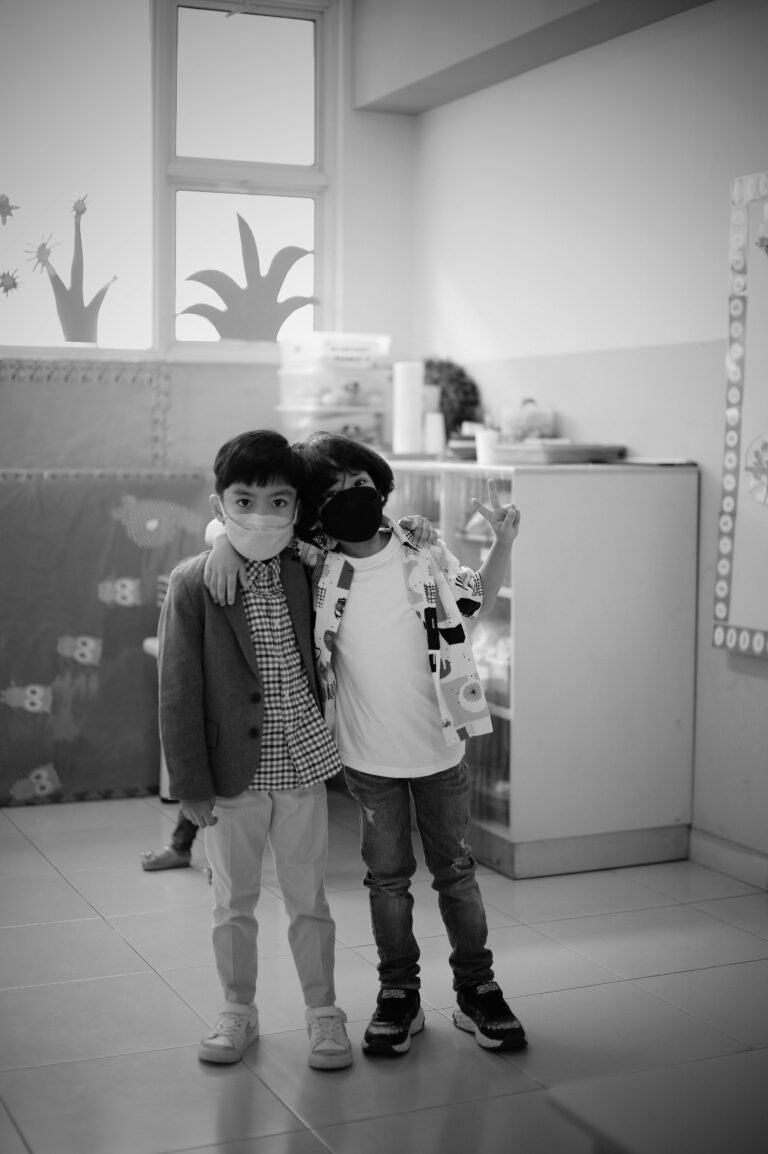In a world that often celebrates conformity, neurodiverse children remind us of the beautiful variety in how minds work and grow. Supporting neurodiverse kids means more than just recognizing their differences—it’s about truly understanding their unique needs, strengths, and challenges. Whether it’s autism, ADHD, dyslexia, or other neurological variations, these children bring a richness to our communities that deserves patience, empathy, and tailored support. In this article, we’ll explore practical ways to embrace neurodiversity, ensuring every child feels valued, understood, and empowered to thrive in their own extraordinary way.
Table of Contents
- Understanding Neurodiversity Through a Strengths-Based Lens
- Creating Inclusive Environments That Foster Growth and Confidence
- Building Effective Communication Strategies Tailored to Individual Needs
- Practical Tips for Parents and Educators to Support Emotional Wellbeing
- In Conclusion
Understanding Neurodiversity Through a Strengths-Based Lens
Viewing neurodiversity through a strengths-based lens invites us to move beyond traditional deficit-focused models, embracing the rich tapestry of skills and perspectives that neurodiverse children bring to the table. This approach acknowledges that differences in cognitive processing, sensory experiences, and communication are not weaknesses but rather unique attributes that can enrich learning environments and social interactions. By highlighting individual talents, creative problem-solving abilities, deep focus, and out-of-the-box thinking, caregivers and educators can foster a sense of pride and empowerment in neurodiverse kids.
Supporting neurodiverse children effectively means tuning into their individual rhythms and recognizing the diverse ways they engage with the world. Key principles include:
- Valuing their unique learning styles and tailoring educational experiences accordingly
- Encouraging strengths such as hyper-focus, artistic skills, or patterns recognition
- Creating safe and predictable environments that reduce sensory overload and anxiety
- Promoting self-advocacy and respect for their personal narratives
This mindset not only enriches the child’s development but also cultivates compassion and inclusivity in the broader community, paving the way for a future where neurodiversity is genuinely celebrated.
Creating Inclusive Environments That Foster Growth and Confidence
Creating spaces where neurodiverse children feel seen and valued begins with recognizing and celebrating their individual strengths. When educators, caregivers, and peers approach each child with empathy and flexibility, it opens doors to authentic growth. Simple adaptations like providing quiet corners for sensory breaks or offering varied communication methods can significantly enhance their comfort and participation. Empowering neurodiverse kids means honoring their pace and style of learning rather than forcing conformity.
To cultivate this enriching environment, consider integrating practices such as:
- Implementing consistent routines that provide clear expectations and reduce anxiety
- Encouraging peer support systems that build social connections and understanding
- Using visual aids and multisensory tools tailored to diverse learning preferences
- Offering positive reinforcement that focuses on effort and progress instead of solely outcomes
Together, these approaches foster confidence and resilience, enabling neurodiverse children to not only navigate challenges but to thrive in environments that respect their uniqueness.
Building Effective Communication Strategies Tailored to Individual Needs
Effective communication with neurodiverse children requires a flexible approach that respects their distinct ways of processing information. It’s essential to observe and listen carefully to each child’s preferences and responses, as some may thrive with visual aids like pictures or diagrams, while others might respond better to simple, clear verbal instructions or tactile experiences. Tailoring strategies involves recognizing and validating their unique communication styles—whether that means providing extra processing time, using assistive technology, or incorporating their special interests into conversations to build engagement and trust.
Creating a nurturing environment where children feel safe to express themselves without judgment is key. Consider these foundational elements for a personalized communication plan:
- Consistency: Use repeated cues and phrases to build familiarity and reduce anxiety.
- Flexibility: Adapt communication methods as the child’s needs evolve over time.
- Positive Reinforcement: Celebrate small wins to encourage ongoing interaction.
- Collaboration: Engage caregivers, educators, and therapists to maintain a unified support system.
Practical Tips for Parents and Educators to Support Emotional Wellbeing
Creating a nurturing environment where neurodiverse children feel seen and valued is key to fostering their emotional wellbeing. Parents and educators can start by actively listening to their thoughts and feelings without immediate judgment or solutions. This validation helps build trust and encourages children to express themselves openly. Incorporating predictable routines while allowing flexibility can reduce anxiety by providing a stable foundation alongside opportunities for growth. Simple strategies such as using visual schedules, offering clear and concise instructions, and providing sensory-friendly spaces contribute to a supportive atmosphere that respects each child’s unique processing needs.
Encouraging self-advocacy and emotional regulation skills is equally important. Adults can model calm responses and teach coping techniques like deep breathing, sensory breaks, or journaling to help children manage overwhelming emotions. Celebrating small successes through positive reinforcement nurtures self-esteem and resilience. Consider building a toolkit together with the child that includes favorite calming activities or comfort items—this personalized approach empowers them to take charge of their emotional health. Remember, patience and consistency are your greatest allies on this journey toward holistic support.
In Conclusion
Supporting neurodiverse kids is a journey that calls for patience, empathy, and a willingness to learn. Every child’s brain works in its own beautiful way, and by understanding their unique needs, we open doors to their full potential. Remember, it’s not about “fixing” differences but embracing them and providing the right support along the way. Together, with kindness and community, we can create spaces where neurodiverse children feel seen, valued, and empowered to thrive. Let’s continue to listen, adapt, and advocate—because every child deserves to shine just as they are.
Related Products
-
Moroccanoil Mini Must-Haves – Deluxe Sampler Set
Beauty $58.00 -
Sale!
DEARMAY Gold Bracelets for Women Waterproof, 14K R…
Clothing Original price was: $19.99.$2.83Current price is: $2.83. -
Sale!
Allewie Queen Size Platform Bed Frame with Velvet …
Home Original price was: $239.99.$163.99Current price is: $163.99.

